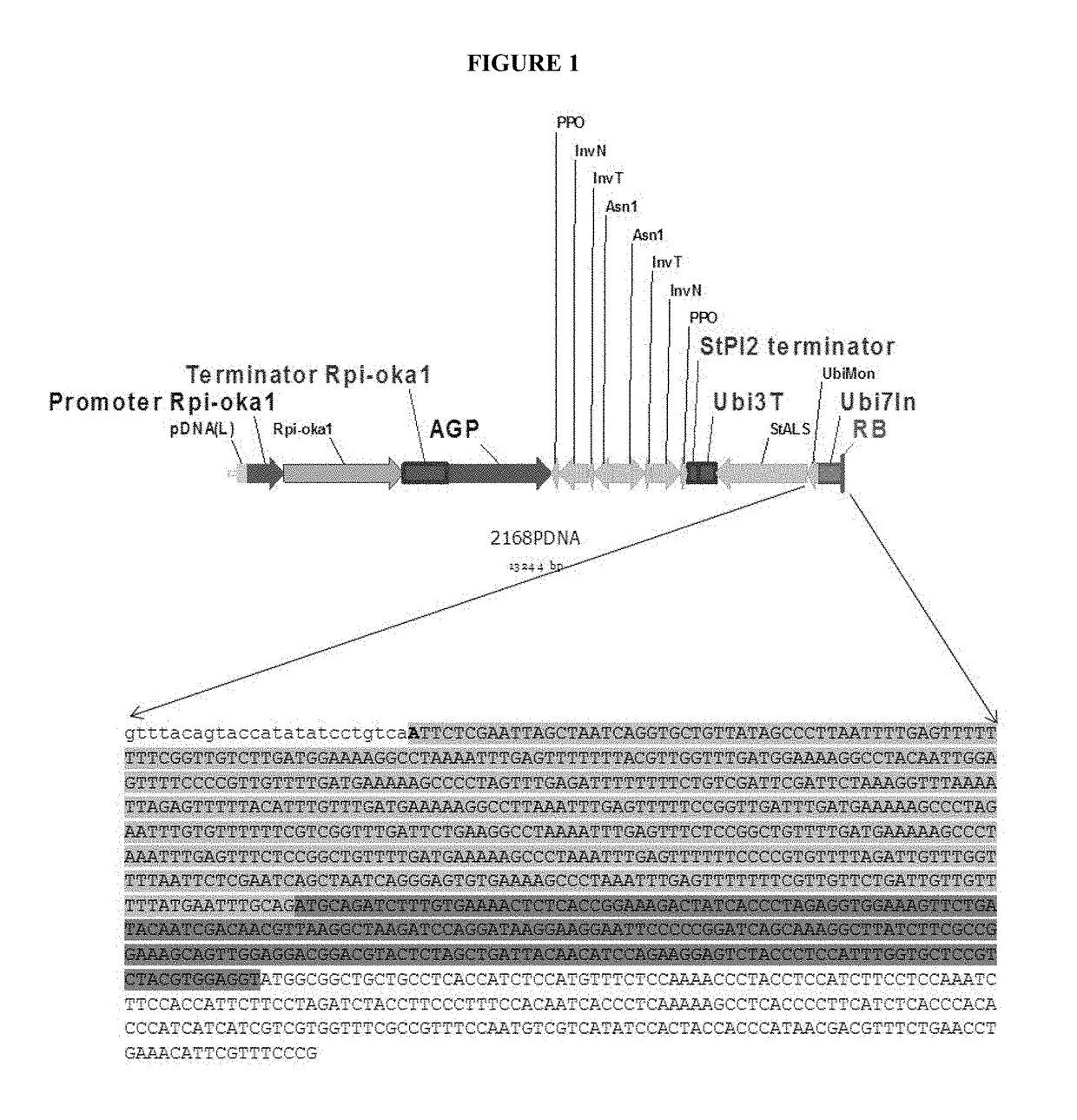TAL-mediated transfer DNA insertion
a technology of dna insertion and tal, which is applied in the field of plant biotechnology, can solve the problems of disconcerting challenges associated with the employment of transgenic traits, and achieve the effects of reducing the level of asparagine in the tuber and reducing the cold-induced sweetening
- Summary
- Abstract
- Description
- Claims
- Application Information
AI Technical Summary
Benefits of technology
Problems solved by technology
Method used
Image
Examples
embodiment 1
stably integrating a desired polynucleotide into a plant genome, comprising:
[0129](A) transforming plant material with a first vector comprising nucleotide sequences encoding TAL or CRISPR proteins designed to recognize a target sequence;[0130](B) transforming the plant material with a second vector comprising (i) a marker gene that is not operably linked to a promoter (“promoter-free marker cassette”) and which comprises a sequence homologous to the target sequence; and (ii) a desired polynucleotide; and[0131](C) identifying transformed plant material in which the desired polynucleotide is stably integrated.
embodiment 2
f Embodiment 1, wherein the transformed plant material is exposed to conditions that reflect the presence or absence of the marker gene in the transformed plant.
embodiment 3
f any of Embodiments 1-2, wherein the marker gene is a herbicide resistance gene and the transformed plant material is exposed to herbicide.
PUM
| Property | Measurement | Unit |
|---|---|---|
| concentration | aaaaa | aaaaa |
| pH | aaaaa | aaaaa |
| blight resistance | aaaaa | aaaaa |
Abstract
Description
Claims
Application Information
 Login to View More
Login to View More - R&D
- Intellectual Property
- Life Sciences
- Materials
- Tech Scout
- Unparalleled Data Quality
- Higher Quality Content
- 60% Fewer Hallucinations
Browse by: Latest US Patents, China's latest patents, Technical Efficacy Thesaurus, Application Domain, Technology Topic, Popular Technical Reports.
© 2025 PatSnap. All rights reserved.Legal|Privacy policy|Modern Slavery Act Transparency Statement|Sitemap|About US| Contact US: help@patsnap.com



